I Visited Edfu Temple in Egypt—and I Wouldn’t Do It Again (2025)
Wondering if Edfu Temple Egypt is worth a stop on your Nile River cruise? I did too—until I went. Here’s why it ended up being my least favorite temple in Egypt.
I had really high hopes for the Temple of Horus at Edfu. After falling in love with the magical Philae Temple and the quiet beauty of Kom Ombo Temple, I was so excited to explore another famous site along the Nile.
And honestly, Edfu Temple is incredible. It’s huge, filled with detailed carvings, and it’s one of the best-preserved temples in all of Egypt. But visiting it? Let’s just say… it wasn’t exactly what I expected.
In this guide, I’m sharing everything you need to know about visiting Edfu Temple—how to get there, what it’s really like, what’s worth seeing, and whether it deserves a spot on your Egypt itinerary.
This blog post is all about visiting Edfu Temple Egypt
Table of Contents
Is Edfu Temple Worth Visiting? My Honest Opinion
There’s no question—Edfu Temple is seriously impressive. It’s the second-largest temple in Egypt (after Karnak), and the amount of history and craftsmanship packed into it is incredible. But if I’m being totally honest, the actual experience of visiting wasn’t my favorite.
Here’s why I personally don’t think Edfu Temple is worth visiting:
- Crowds everywhere: Even early in the morning, the place was packed with big tour groups.
- Chaotic atmosphere: Guides shouting over each other made it hard to enjoy.
- Quick visits: Most tours rush through, so you don’t get much time to actually explore.
- Horse-drawn carriages: The only way from the dock to the temple is by carriage, and the condition of the animals was heartbreaking.
- Pushy vendors: The entrance felt overwhelming and stressful.
If you’re someone who loves slow, peaceful travel moments, you might find more magic at the beautiful mosques in Egypt or at quieter temples along the Nile. Honestly, looking back, I kind of wish I had stayed on the cruise boat like one of the girls in my group—she spent the morning relaxing on deck and had an amazing time.
Still want to visit? No worries—so did I! Let’s get into everything you need to know to make the most of a trip to Edfu Temple.
Best Time to Visit Edfu Temple
Edfu Temple opens daily at 6:00 AM—and believe it or not, by 5:30 AM there’s already a line. Most Nile River cruises schedule their stop here first thing in the morning, so be ready for a rush of tour groups all arriving at once.
We got up ridiculously early and still ended up stuck in a long queue. By the time we finally got inside, the temple was packed. It was hard to even move through the inner chambers, let alone pause and appreciate all the details.
If you’re visiting independently (and not tied to a cruise schedule), the best time to go is in the late afternoon, once most of the crowds have cleared out. Just remember—Edfu Temple closes at 5:00 PM, so make sure you give yourself enough time to explore.
Bonus Tip: The best time to visit Egypt overall is between November and March when the weather is cooler (around 20–25°C / 68–77°F). Summer in Egypt is brutally hot, and with almost no shade at Edfu Temple, visiting during peak summer isn’t something I’d recommend.
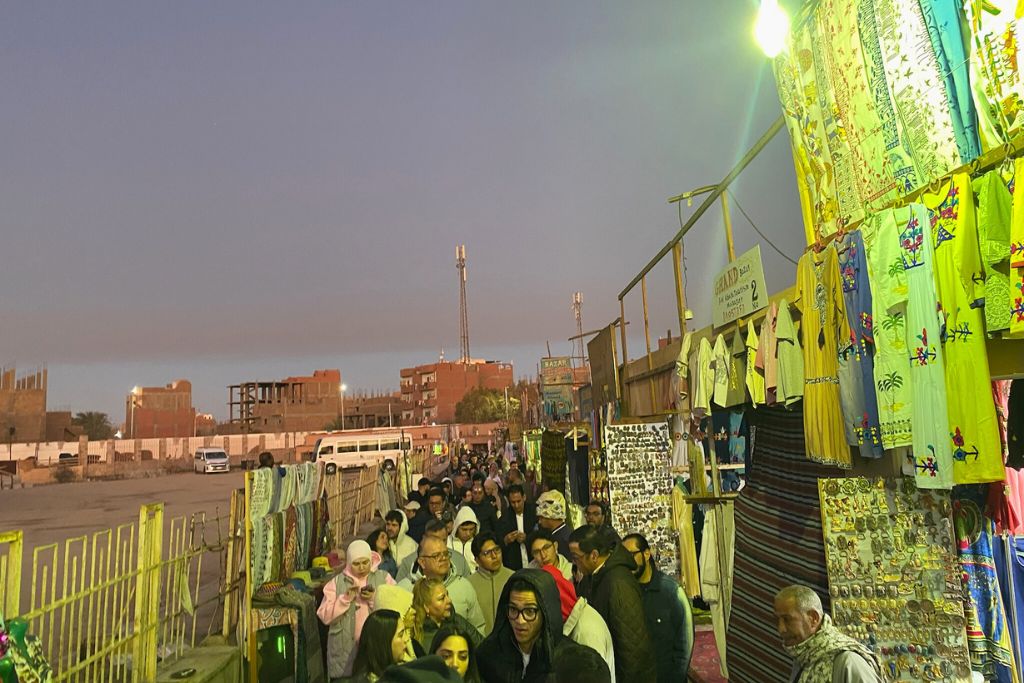
How to Get to Edfu Temple
Edfu Temple is located in the small town of Edfu, about halfway between Aswan and Luxor. Most travelers visit as part of a Nile River cruise—and honestly, that’s the easiest way. But there are a few things you should know before you go.
If You’re on a Nile Cruise:
This is the most common way to visit. Your boat docks early in the morning, and from there, you’re expected to take a horse-drawn carriage to the temple.
And honestly, this is where things went downhill for me.
The horses looked underfed, some were limping, and the ride itself was rough. Our driver was rude and even demanded extra tips “for the horse’s food.” The whole experience just felt wrong.
I’d read beforehand that walking or taking a tuk-tuk might be possible—but at 5 AM, half-asleep and overwhelmed, I didn’t push back. Looking back, I wish I had.
Bonus Tip: If you feel uncomfortable, don’t be afraid to speak up and let your guide or cruise company know ahead of time that you prefer another option.

If You’re Traveling Independently:
Trains run between Luxor and Aswan, and you can hop off at Edfu (it’s about 1.5 to 2 hours). But the temple is still about 4 km from the station, so you’ll either need to grab a taxi—or possibly deal with the same carriage situation.
A better (and much more relaxed) option is to book a day trip with a private driver or a guided tour that includes both Edfu and Kom Ombo Temple. You’ll find good options through GetYourGuide or Klook. It’s more comfortable, more ethical, and way less stressful.
Bonus Tip: Uber doesn’t operate in Edfu, Luxor, or Aswan. If you want more tips on getting around, I’ve shared everything you need to know in my Uber in Egypt guide.
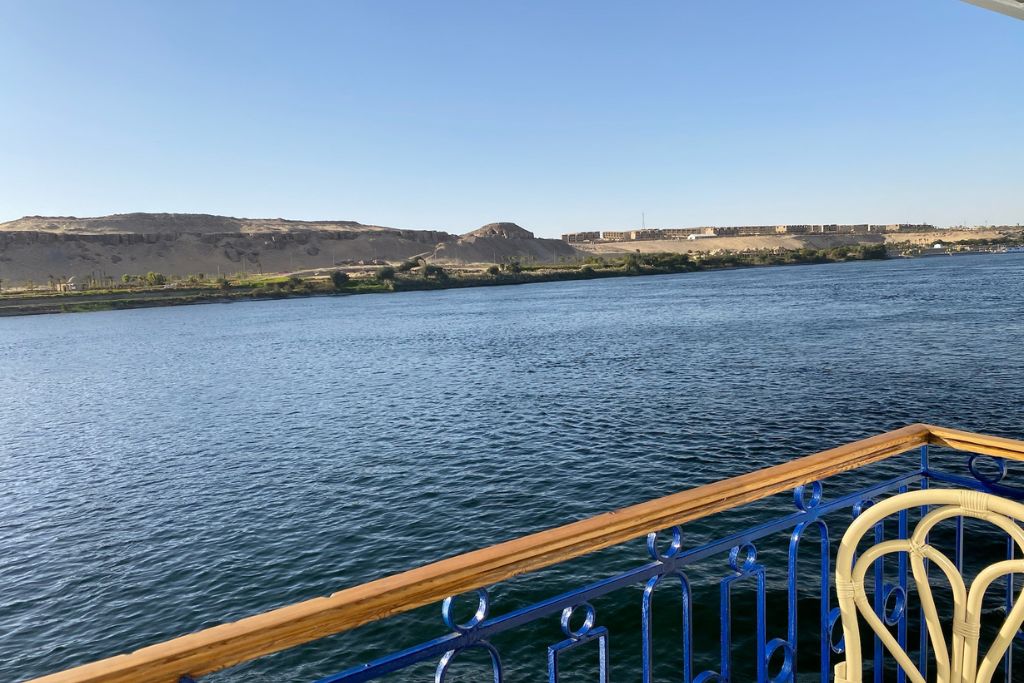
What to See at Edfu Temple
Even if the experience of visiting Edfu Temple wasn’t my favorite, there’s no denying that the temple itself is incredible once you’re inside. It’s one of the most complete and well-preserved temples in all of Egypt, and there’s plenty to admire if you take the time to look.
If you decide to go—or end up there as part of your cruise—here’s what to keep an eye out for:
1. The Grand Entrance (Pylon)
The first thing you’ll see is the towering front pylon, one of the tallest in Egypt at 36 meters high. It’s guarded by two fierce statues of Horus, the falcon-headed god, standing proudly at either side.
I remember feeling so tiny standing in front of it! The pylon is covered in detailed carvings showing Horus triumphing over his enemies—make sure to pause and really take it all in before the crowds pull you inside.
Fun Fact: The entire temple was buried under layers of desert sand and rubble for centuries, which is why it’s so beautifully preserved today.
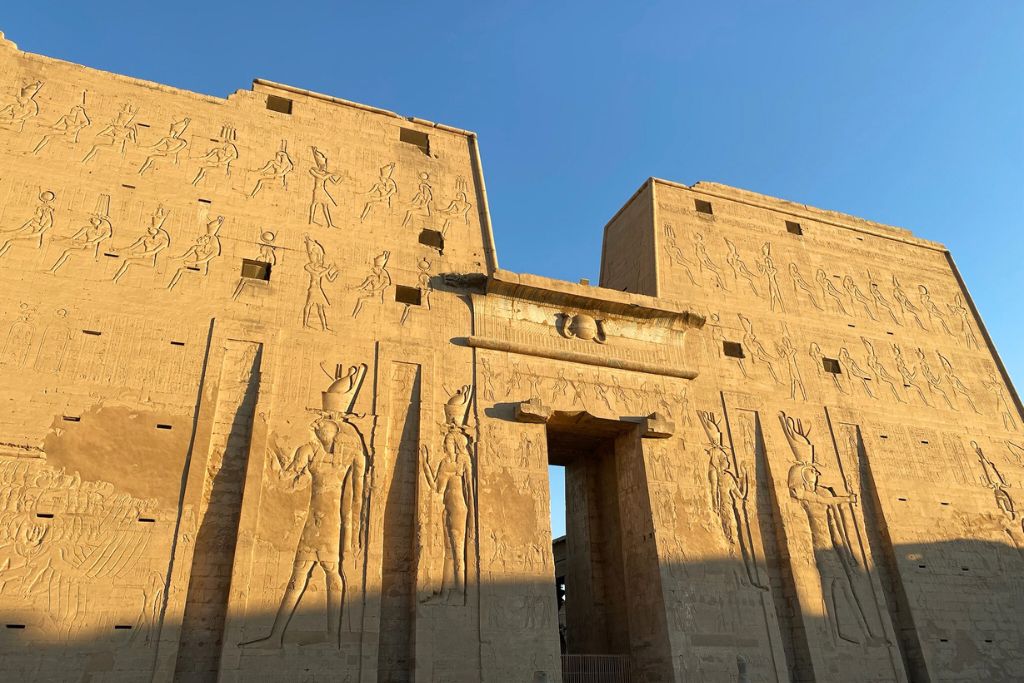
2. The Open-Air Courtyard
After passing through the pylon, you’ll step into a bright, open courtyard lined with elegant columns. This space once hosted grand ceremonies and public rituals.
This was actually one of my favorite spots because it still felt open and (relatively) peaceful even when the temple got busy. Plus, the light here makes for gorgeous photos if you’re quick!
3. The Hypostyle Hall
Next up: the hypostyle hall, where massive stone columns soar up to a ceiling painted with stars. Every inch is carved with scenes of gods, pharaohs, and rituals.
When I visited, it was so crowded you could barely move. Tour groups filled every corner, and it was hard to find a quiet moment. But if you can press yourself against one of the columns and just look up for a few seconds, it’s still possible to catch a glimpse of the ancient magic hidden behind the chaos.
Bonus Tip: Look closely and you’ll spot gods’ faces chipped away and Christian crosses carved into the walls—reminders of when the temple was used as a church!

4. The Sanctuary of Horus (Naos)
At the very heart of the temple sits the sanctuary, where the sacred statue of Horus once stood. You’ll see a black granite shrine brought from an even earlier dynasty—it’s one of the oldest parts of the temple.
I couldn’t get super close because of the crowds, but even from a distance, you can feel the power and importance of this space. And yes—you might spot a random Wi-Fi sign here too, which gave me a good laugh. Ancient history meets modern life!

5. The Outer Walls
Before you leave, make sure to take a few minutes to wander around the temple’s outer walls. They’re covered in incredible scenes of ancient festivals, offerings, and daily life.
Most people skip this part entirely, but for me, it was the most peaceful moment of the visit—and honestly, the part that made Edfu Temple feel worth it.
6. The Nilometer
Tucked away to one side, you’ll find the nilometer—an ancient tool used to measure the Nile’s water levels each year. It’s easy to miss, but such a fascinating reminder of just how connected daily life was to the rhythms of the river.
7. Edfu Sound and Light Show
If you’re staying overnight near Edfu (which isn’t very common, but possible), the Edfu Temple Sound and Light Show is a beautiful way to experience the temple without the crowds.
If you liked the shows at Karnak, Philae Temple, or even the Giza Pyramids, this one is definitely worth seeing. Watching the story of Horus unfold with lights and music under the stars sounds like the peaceful Edfu experience I wish I’d had!
Edfu Temple Sound and Light Show Details:
- Showtimes: Daily at 18:00 and 19:00
- Ticket Prices: $15 for adults / $8 for children (ages 6–12)
- Language: Available in all languages
- Booking: Reserve your spot on the official Sound and Light Show website
Tips for Visiting Edfu Temple
If you’re planning a trip to the Temple of Horus, here are a few tips I really wish someone had shared with me before I went. Hopefully, they’ll help make your visit a whole lot smoother (and way less frustrating!).
- Visit early—or even better, late: Most Nile cruises dock at Edfu around 6:00 AM, and the temple fills up almost immediately. If you can, try to be one of the first inside. If you’re traveling independently, aim for just before closing (around 5:00 PM) when the crowds start to thin out.
- Ask about carriage alternatives: I didn’t know this at the time, but some tours now offer tuk-tuks or even vans instead of the traditional horse-drawn carriages. It’s not super common yet, but it’s definitely worth asking your guide or cruise company in advance.
- Be firm with vendors: The entrance can feel a little chaotic, with souvenir sellers crowding around. It honestly reminded me of a mini (and way more hectic) Khan el-Khalili Bazaar. Just smile, say a polite but firm no, and keep moving if you’re not interested.
- Prepare for a quick visit: Cruises run on tight schedules, and visits to Edfu usually feel a bit rushed. If you want to snap some good photos or really take in the details, move quickly—you won’t have tons of time to wander.
- Eat (or at least grab coffee) before you go: Our cruise served a full Egyptian breakfast after the Edfu stop, and I seriously wished I’d grabbed a coffee beforehand. My dad did—and let’s just say, he was a lot happier dealing with the bumpy carriage ride than I was!
Planning more adventures in Egypt? I’ve got you covered! Whether you’re excited for the new Grand Egyptian Museum, dreaming of a perfectly planned 3-day Cairo itinerary, or thinking about a scenic day trip to Alexandria, there’s so much more to explore.
Where to Stay Near Edfu Temple Egypt
Just like Kom Ombo, there’s not a lot going on in Edfu itself, and the town has very limited places to stay. I’d recommend visiting Edfu Temple as part of a Nile cruise or basing yourself in Luxor or Aswan, where you’ll find way more options for hotels, restaurants, and things to do.
Here are a few top picks depending on your style and budget:
- Luxury: Sofitel Legend Old Cataract (Aswan) or Sofitel Winter Palace (Luxor) for historic charm and beautiful Nile views.
- Boutique: Al Moudira Hotel (Luxor) for a peaceful, design-forward escape.
- Mid-Range: Mövenpick Resort (Aswan) or Djorff Palace (Luxor) for comfort, great service, and stunning settings without breaking the bank.
- Budget: Kato Waidi Nubian Guest House (Aswan) or Iberotel (Luxor) for affordability and great locations.
Heading to Cairo too? Check out my guide to the best hotels in Cairo for first-time visitors—it’s full of tips, personal favorites, and even a few places with Pyramid views!
FAQs About Visiting Edfu Temple
Before wrapping up this Edfu Temple guide, here are some of the most common questions travelers have about Edfu Temple—plus a few things I wish I’d known before I visited!
Edfu Temple is dedicated to Horus, the falcon-headed god of protection. Built between 237 and 57 BC, it’s one of Egypt’s best-preserved temples. You’ll also see carvings that tell the epic story of Horus avenging his father Osiris—a key legend in ancient Egyptian mythology.
Tickets to Edfu Temple cost around 550 EGP (about $11 USD), with discounts for students who show a valid ID. If you’re coming by cruise, the horse-drawn carriage ride from the dock is extra—usually 50–100 EGP per person. Make sure to bring cash, as cards aren’t accepted.
You don’t need a guide to visit Edfu Temple, but it definitely helps. The carvings are full of symbolism and mythology that’s easy to miss on your own. That said, if the site is crowded or you’re short on time, a quick, self-guided visit works just fine too.
Yes, Edfu Temple is generally safe for solo female travelers, but the experience can feel a bit overwhelming. The carriage area is chaotic, and some vendors are pushy. Dress modestly, stay confident, and don’t be afraid to say no. Joining a guide or small group can make it easier.
Visiting Edfu Temple typically takes 1.5 to 2 hours, including the carriage ride. The temple isn’t very large, and if it’s crowded, you’ll likely move through quickly. Many visitors spend around 45 minutes inside—which often feels like enough, especially since it’s not the most peaceful or relaxing site.
Final Thoughts on Visiting Edfu Temple
Edfu Temple was one of those places I really wanted to love—but honestly, I didn’t. The history and architecture are incredible, no question. But the crowds, chaos, and uncomfortable carriage ride made it tough to enjoy.
That said, even if Edfu Temple wasn’t a highlight for me, Egypt is absolutely worth visiting—there’s so much beauty, history, and magic to explore across the country.
Have you been to Edfu? Did you have a better experience, or did it feel a bit overwhelming too? I’d love to hear your thoughts—drop them in the comments!

Other Egypt Travel Guides You Might Enjoy:
- Master the Art of Haggling in Egypt — Without Getting Ripped Off!
- Coptic Cairo: Hidden Gems, Ancient Churches & History You Can’t Miss
- 10 Unique Things to Do in Cairo (That Aren’t the Pyramids!)
- The Absolute Worst Time to Visit Egypt — And When You Should Go Instead
- 15 Mouthwatering Egyptian Foods You Need to Try on Your Trip
Liked This Edfu Temple Guide? Pin it for Later!

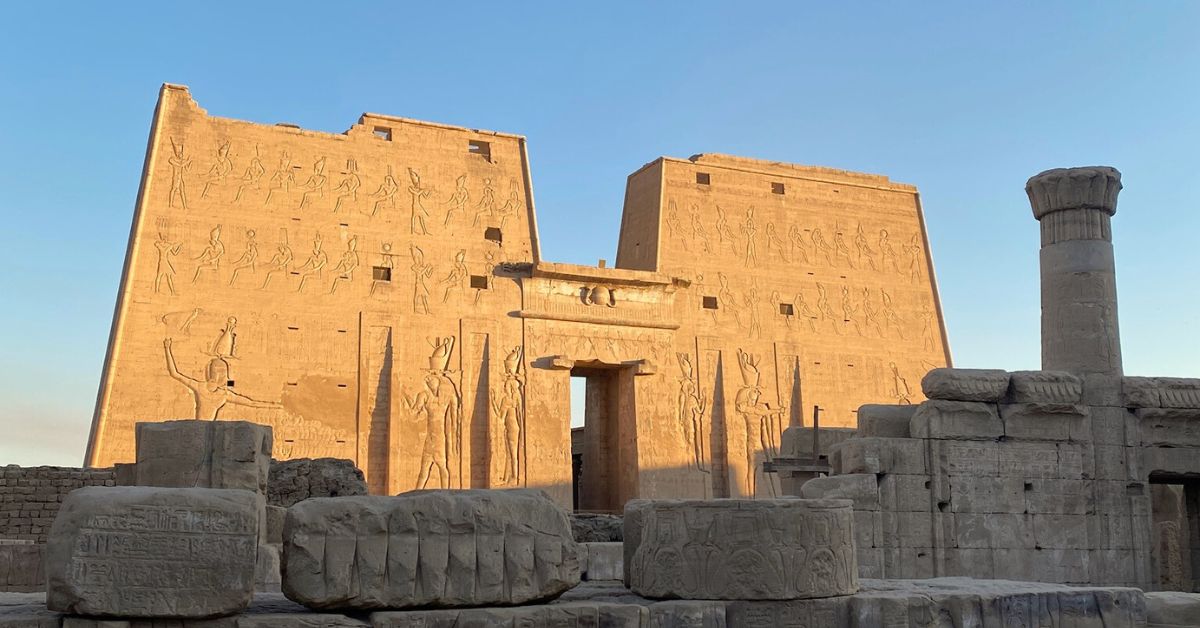

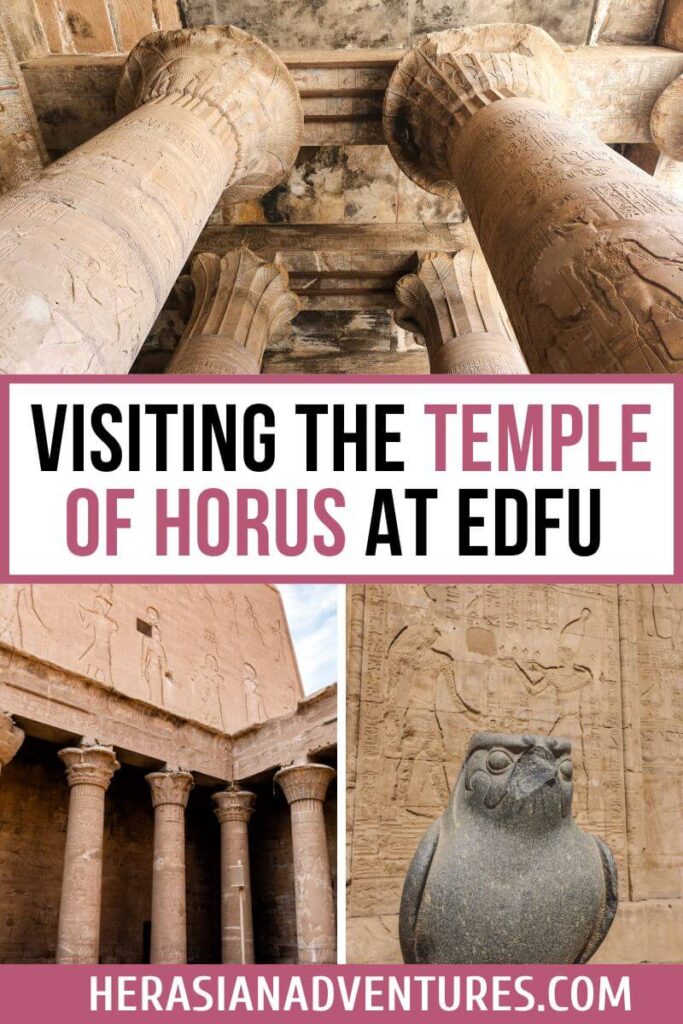
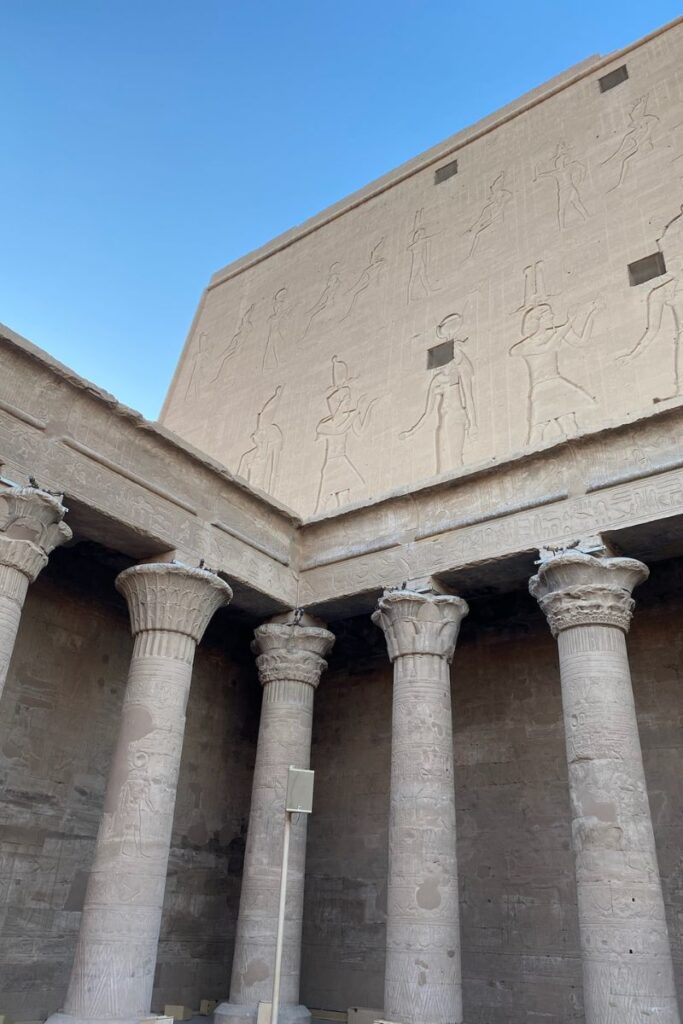
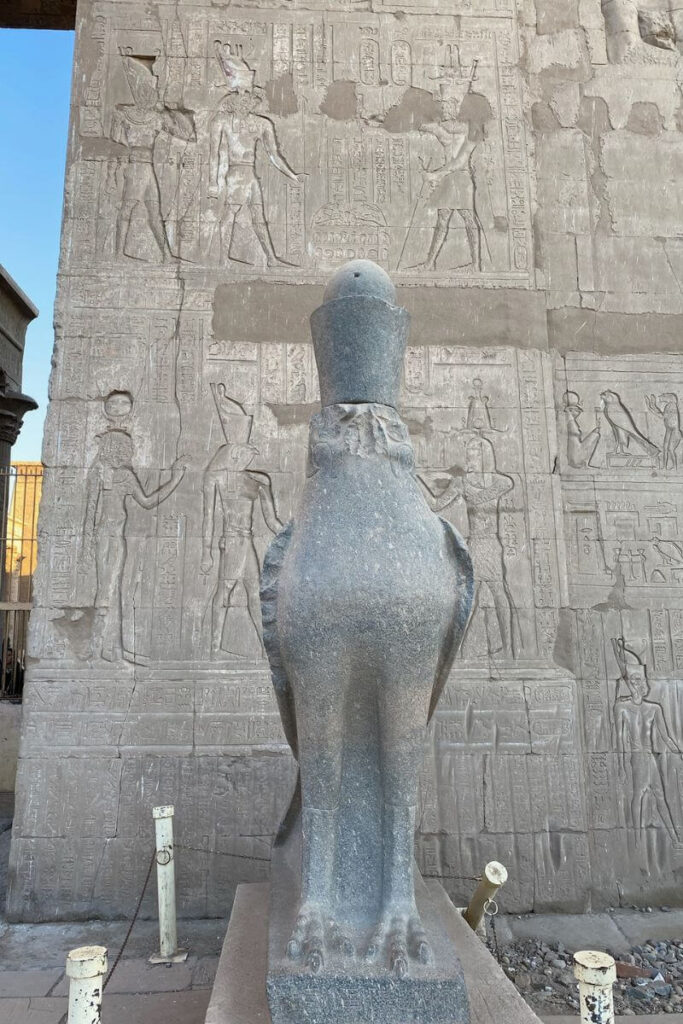
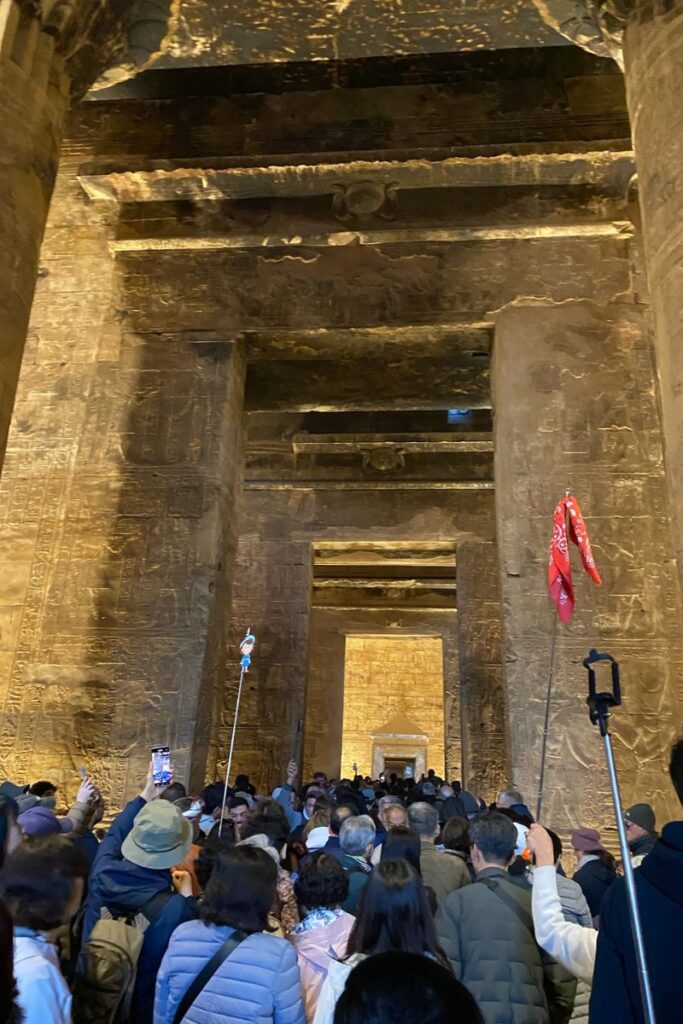


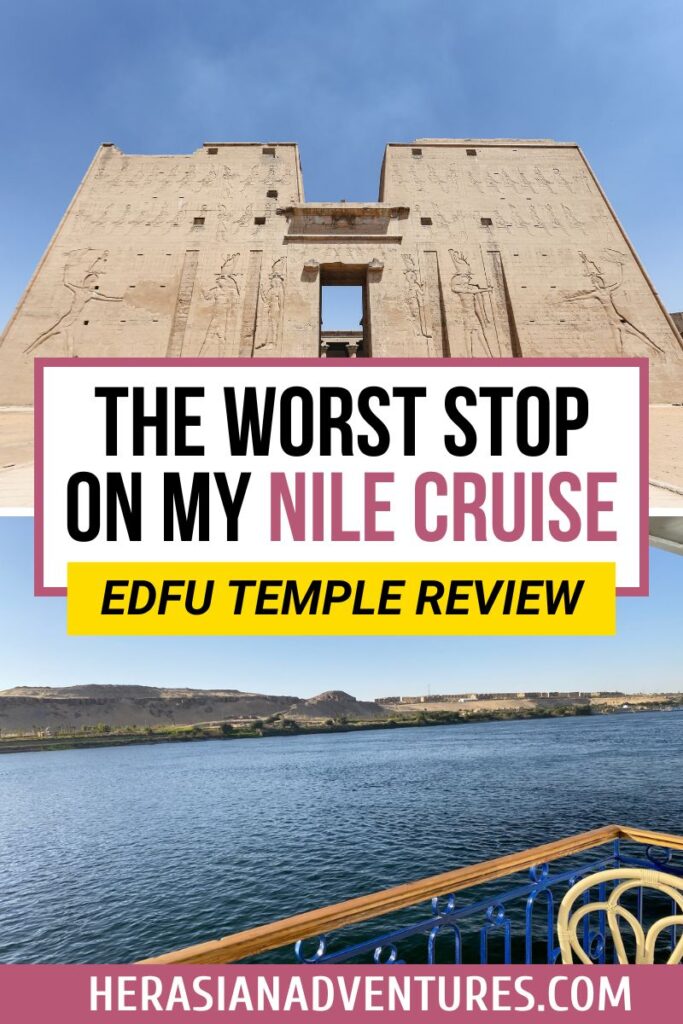

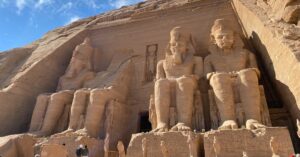
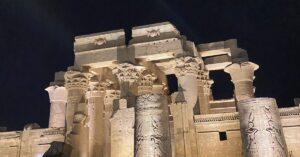



I appreciate the honest feedback. Between the condition of the horses and the crowds, I’d prefer to visit some of the other temples that you suggest.